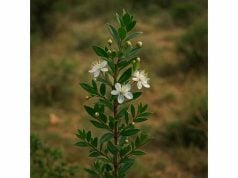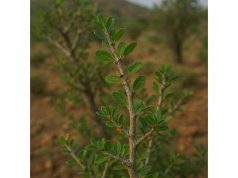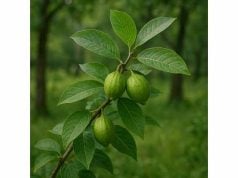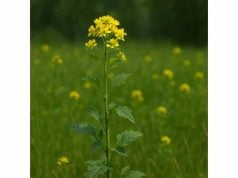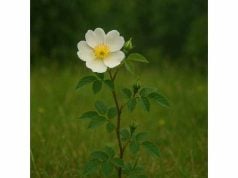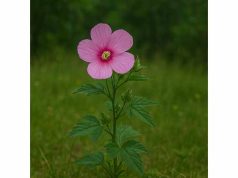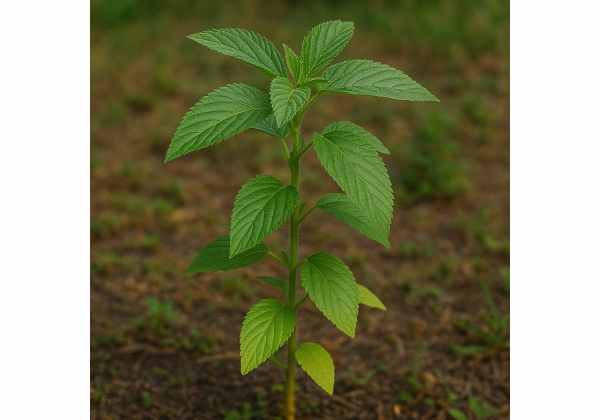
Molokhia is a traditional leafy green vegetable widely consumed in Middle Eastern and North African cuisine, especially in Egypt. Known for its mucilaginous texture and distinct, slightly bitter flavor, it is celebrated for its rich nutritional profile that includes high levels of vitamins, antioxidants, and dietary fiber. Traditionally prepared as a hearty soup or stew, Molokhia is valued for its digestive, anti-inflammatory, and immune-boosting properties. Its bioactive compounds—such as polyphenols, flavonoids, and carotenoids—contribute to its health benefits, making it a functional food. This comprehensive guide explores Molokhia’s botanical characteristics, active compounds, therapeutic benefits, diverse applications, and the latest scientific research.
Table of Contents
- Plant Profile and Identification
- Phytochemical Profile and Active Compounds
- Health Benefits and Essential Properties
- Applications, Precautions, and Usage Guidelines
- Research Insights and Key Findings
- Frequently Asked Questions
Plant Profile and Identification
Molokhia, scientifically known as Corchorus olitorius, is a leafy annual herb belonging to the Malvaceae family. Commonly referred to as jute mallow, this plant is native to tropical and subtropical regions of Africa and Asia but has gained widespread popularity in the Middle East. It is primarily cultivated for its edible leaves, which are prized for their unique texture and nutritional value.
Taxonomy and Botanical Description
The taxonomy of Molokhia is well established:
- Kingdom: Plantae
- Clade: Angiosperms
- Clade: Eudicots
- Order: Malvales
- Family: Malvaceae
- Genus: Corchorus
- Species: C. olitorius
Molokhia features bright green, serrated leaves that are soft and mucilaginous when cooked. The leaves have a distinctive appearance, with a combination of tender texture and a slightly fibrous structure. The plant typically grows to a height of 1–1.5 meters and produces small, inconspicuous flowers that are usually yellowish or white. Though the flowers may not be visually striking, they are essential for seed production and contribute to the plant’s ability to self-sow.
Growth Conditions and Natural Habitat
Molokhia thrives in warm climates with ample sunlight and requires well-drained, nutrient-rich soil for optimal growth. It is highly adaptable and can grow in a variety of soil types, although loamy soils enriched with organic matter yield the best results. In its native habitat, Molokhia is often found along riverbanks and in irrigated fields, where the availability of water supports its rapid growth cycle. The plant is known for its ability to produce a substantial harvest in a short period, which makes it a staple in traditional agriculture.
Farmers appreciate Molokhia for its resilience and low maintenance requirements. Its quick maturation cycle—often reaching harvestable size within 4 to 6 weeks—allows for multiple cropping cycles in a single growing season. Moreover, its ability to withstand occasional drought conditions further enhances its appeal in regions with variable rainfall.
Historical and Cultural Significance
Historically, Molokhia has been cultivated for centuries and holds a significant place in the culinary traditions of Egypt, Lebanon, and other Middle Eastern countries. In Egypt, Molokhia soup is a national dish, prepared with finely chopped leaves, garlic, coriander, and often served with rice or meat. Beyond its culinary uses, Molokhia has been utilized in traditional medicine for its purported ability to boost immunity, aid digestion, and provide general nourishment.
Culturally, the herb is associated with prosperity and vitality. Its lush green leaves symbolize fertility and abundance, making it a common feature in festive and celebratory meals. Over time, its popularity has spread beyond its regions of origin, and it is now recognized as a superfood with substantial health-promoting properties.
Ecological Role and Agricultural Impact
Molokhia plays a vital role in sustainable agriculture. Its rapid growth and dense foliage help prevent soil erosion and improve soil fertility through organic matter addition. The plant also supports local biodiversity by providing food and habitat for various insects and birds. Additionally, its ability to grow in diverse climatic conditions makes it an ideal candidate for intercropping systems, where it can be cultivated alongside other crops without depleting soil nutrients.
In summary, the botanical profile of Molokhia reveals a resilient, fast-growing herb that is not only a culinary delight but also a valuable component of sustainable agriculture. Its distinctive physical characteristics, adaptability to various environments, and rich historical background contribute to its enduring popularity and widespread use in traditional and modern settings.
Phytochemical Profile and Active Compounds
The health-promoting properties of Molokhia are largely due to its diverse array of bioactive compounds. Modern phytochemical studies have identified a variety of substances that contribute to its nutritional and therapeutic effects. Below is an exploration of the key active compounds found in Molokhia:
- Glucosinolates
Glucosinolates are sulfur-containing compounds prevalent in cruciferous vegetables, including Molokhia. These compounds are precursors to isothiocyanates, which are released during digestion. Isothiocyanates have been widely studied for their anticancer properties, as they help in detoxifying carcinogens and inhibiting tumor growth. Their role in boosting cellular defense mechanisms is an area of ongoing research. - Flavonoids
Molokhia is rich in flavonoids such as quercetin, kaempferol, and myricetin. These powerful antioxidants help neutralize free radicals, reducing oxidative stress and protecting cells from damage. Flavonoids also exhibit anti-inflammatory properties, aiding in the reduction of chronic inflammation and contributing to cardiovascular and immune health. - Phenolic Acids
Phenolic acids, including caffeic acid and ferulic acid, are integral components of Molokhia’s phytochemical profile. These acids enhance the herb’s antioxidant capacity, scavenging harmful free radicals and protecting against oxidative stress. Their antimicrobial properties further contribute to Molokhia’s ability to support digestive and immune functions. - Polysaccharides
The dietary fiber and polysaccharides present in Molokhia play a crucial role in promoting digestive health. These complex carbohydrates not only aid in regulating bowel movements and supporting gut flora but also help in lowering cholesterol levels and controlling blood sugar. Polysaccharides contribute to the herb’s overall nutritional value and its role in detoxification. - Vitamins and Minerals
Molokhia is an excellent source of essential vitamins and minerals. It is particularly rich in vitamin C, vitamin A, and vitamin K, which are vital for immune function, vision, and blood clotting, respectively. Additionally, it contains minerals such as calcium, iron, and potassium, which support bone health, oxygen transport, and electrolyte balance. - Carotenoids
Carotenoids, such as beta-carotene, are responsible for the vibrant green color of Molokhia. These compounds are converted into vitamin A in the body, playing a crucial role in maintaining healthy vision, immune function, and skin health. Their antioxidant properties further bolster the herb’s ability to protect cells from oxidative damage.
The synergistic action of these bioactive compounds provides Molokhia with a powerful array of health benefits. For instance, the combination of glucosinolates and flavonoids not only enhances its antioxidant capacity but also supports detoxification and cancer prevention. Meanwhile, the presence of polysaccharides and vitamins underpins its role in promoting digestive health and overall nutritional well-being.
Advanced analytical techniques such as high-performance liquid chromatography (HPLC) and mass spectrometry have enabled researchers to precisely quantify these compounds in Molokhia. This detailed understanding of its phytochemical profile not only validates traditional uses but also facilitates the development of standardized extracts for therapeutic applications. As research progresses, further insights into the molecular interactions of these compounds may open new avenues for the use of Molokhia in integrative medicine.
Health Benefits and Essential Properties
Molokhia is celebrated for its impressive range of health benefits, which are attributed to its rich nutritional content and bioactive compounds. Both traditional medicine and modern research have documented its ability to support various aspects of health. Below are the essential properties and therapeutic benefits of Molokhia:
Digestive Health and Detoxification
Molokhia is widely recognized for its positive impact on the digestive system. The high dietary fiber content promotes regular bowel movements and aids in maintaining a healthy gut microbiome. Its natural mucilaginous texture helps soothe the gastrointestinal tract, reducing irritation and supporting efficient digestion. Additionally, the bioactive compounds in Molokhia stimulate digestive enzymes, enhancing nutrient absorption and promoting detoxification by facilitating the elimination of toxins.
Antioxidant Protection
The wealth of flavonoids, phenolic acids, and carotenoids in Molokhia provides robust antioxidant protection. These compounds effectively neutralize free radicals, thereby minimizing oxidative stress and reducing the risk of chronic diseases such as heart disease, diabetes, and cancer. Antioxidants in Molokhia also contribute to skin health and anti-aging, helping to preserve cellular integrity and overall vitality.
Anti-Inflammatory Effects
Chronic inflammation is a common contributor to numerous health conditions, including arthritis and cardiovascular disease. Molokhia’s bioactive compounds, particularly its flavonoids and phenolic acids, have potent anti-inflammatory properties. These compounds help inhibit the production of pro-inflammatory cytokines, thereby reducing inflammation and alleviating pain associated with inflammatory disorders.
Immune System Enhancement
Rich in vitamin C and other immune-supporting nutrients, Molokhia plays a vital role in strengthening the body’s immune response. Regular consumption of Molokhia can boost the activity of immune cells, helping to ward off infections and promote overall health. Its immunomodulatory effects make it a valuable food during periods of illness or high stress.
Cardiovascular and Metabolic Health
Molokhia contributes to cardiovascular health through its ability to improve blood circulation and reduce oxidative stress on the vascular system. The presence of potassium helps regulate blood pressure, while antioxidants prevent the oxidation of cholesterol, thereby reducing the risk of plaque formation in the arteries. Furthermore, its fiber content aids in managing blood sugar levels and supporting metabolic balance, making it beneficial for weight management and overall energy levels.
Cognitive and Mental Well-Being
Preliminary studies suggest that the antioxidants and essential nutrients in Molokhia may have a positive impact on brain health. By reducing oxidative stress and promoting healthy blood flow to the brain, Molokhia may enhance cognitive function and mental clarity. Additionally, its anti-inflammatory properties can help reduce neuroinflammation, potentially mitigating the effects of age-related cognitive decline.
Overall Nutritional Support
As a nutrient-dense food, Molokhia provides a broad spectrum of vitamins and minerals that are essential for maintaining overall health. Its rich content of vitamins A, C, and K, along with minerals such as iron, calcium, and potassium, supports everything from bone health and immune function to vision and blood clotting. This comprehensive nutritional profile makes Molokhia an ideal component of a balanced diet.
In summary, the essential properties of Molokhia include:
- Digestive and Detoxification Support: Enhances enzyme production, promotes regular bowel movements, and aids in toxin elimination.
- Antioxidant Defense: Neutralizes free radicals to protect cells from oxidative damage.
- Anti-Inflammatory Action: Reduces inflammation and associated discomfort.
- Immune Enhancement: Boosts immune cell function and strengthens overall immunity.
- Cardiovascular and Metabolic Health: Supports healthy blood pressure and regulates blood sugar levels.
- Cognitive Support: May improve mental clarity and protect against neuroinflammation.
- Nutritional Value: Provides a wide range of essential vitamins and minerals.
These health benefits illustrate why Molokhia is revered not only as a traditional culinary ingredient but also as a functional food with significant potential to improve overall well-being.
Applications, Precautions, and Usage Guidelines
Molokhia is a versatile herb used across various culinary and medicinal applications. Its unique texture and robust nutritional profile make it a popular choice in traditional dishes and natural health remedies. To maximize its benefits and ensure safety, it is important to follow proper preparation methods, dosage guidelines, and safety precautions.
Culinary Applications
- Traditional Soups and Stews:
In many Middle Eastern and North African cuisines, Molokhia is the star ingredient in hearty soups and stews. The leaves are finely chopped and simmered with garlic, coriander, and other spices to create a flavorful, nutrient-rich broth. This dish is not only satisfying but also packed with vitamins and antioxidants. - Salads and Side Dishes:
Fresh Molokhia leaves can be used raw in salads, providing a slightly mucilaginous texture and a subtle, earthy flavor. They are often mixed with other greens to create a balanced and refreshing dish. - Smoothies and Juices:
For those looking to boost their nutrient intake, adding a handful of Molokhia to smoothies or juices can provide an extra dose of vitamins and antioxidants without overpowering the flavor. - Culinary Garnish:
Molokhia can be used as a garnish for rice dishes, grilled meats, or vegetable platters, adding both color and nutritional value.
Medicinal and Therapeutic Applications
- Herbal Teas and Infusions:
Prepare Molokhia tea by steeping a small handful of fresh or dried leaves in hot water for 10–15 minutes. This infusion is traditionally used to support digestion, boost the immune system, and provide antioxidant protection. - Tinctures and Extracts:
Concentrated extracts of Molokhia are available in tincture form. These are typically taken in small doses and can be used to support overall health, particularly for their anti-inflammatory and detoxifying properties. - Dietary Supplements:
Molokhia powder is sometimes encapsulated and used as a dietary supplement. This form allows for a controlled intake of its bioactive compounds and is often included in formulations aimed at enhancing nutritional intake and overall wellness. - Topical Applications:
While less common, Molokhia extracts are occasionally incorporated into skincare formulations due to their antioxidant and anti-inflammatory properties. These can help soothe irritated skin and promote healing when applied topically.
Dosage Guidelines
- For Culinary Use:
A typical serving size of Molokhia in a soup or salad is about one cup of chopped leaves per meal. This amount provides a significant nutritional boost without overwhelming the dish. - For Herbal Infusions:
Use approximately 5–10 grams of dried Molokhia leaves per cup of water. Consuming one to two cups per day is generally recommended for digestive and immune support. - For Tinctures/Extracts:
Follow the dosage instructions provided by the manufacturer. Typically, a few drops diluted in water or juice is sufficient. - For Dietary Supplements:
Adhere to the recommended serving size on the product label. If unsure, consult a healthcare professional to determine the appropriate dosage based on your individual needs.
Safety Considerations and Precautions
- Allergic Reactions:
Although Molokhia is widely consumed and generally considered safe, some individuals may experience allergic reactions, especially if they have sensitivities to leafy greens. Symptoms such as itching, swelling, or gastrointestinal discomfort should prompt discontinuation and consultation with a healthcare provider. - Pregnancy and Breastfeeding:
Molokhia is typically safe as a food ingredient; however, concentrated extracts or supplements should be used with caution. Pregnant or breastfeeding women should consult a healthcare provider before using these products. - Medication Interactions:
Due to its high vitamin K content, Molokhia may interact with blood-thinning medications. If you are on anticoagulants or other prescription medications, consult with your doctor before increasing your intake. - Quality and Source:
Always purchase Molokhia from reputable sources to ensure it is free from contaminants and pesticides. Organic or locally grown varieties are preferred for their purity and nutritional integrity.
Practical Usage Tips
- Gradual Introduction:
If you are new to Molokhia, start with small amounts to monitor how your body responds before increasing your intake. - Complementary Ingredients:
Molokhia pairs well with garlic, lemon, and fresh herbs like coriander, which can enhance its flavor and health benefits. - Proper Storage:
Fresh Molokhia should be stored in the refrigerator, preferably wrapped in a damp cloth or paper towel, and used within a few days. Dried Molokhia should be kept in an airtight container in a cool, dark place. - Cooking Techniques:
To preserve its nutritional value, add Molokhia to dishes toward the end of the cooking process. Overcooking may reduce its beneficial compounds.
By following these guidelines, you can safely enjoy the multifaceted benefits of Molokhia, whether as a nutritious component of your diet or as part of a targeted herbal remedy.
Research Insights and Key Scientific Findings
A growing body of scientific research supports the traditional uses of Molokhia and highlights its potential as a functional food with diverse health benefits. Here are some notable research findings:
- Antioxidant Capacity and Free Radical Scavenging (2017)
A study published in the Journal of Food Science analyzed the antioxidant activity of Molokhia extracts. The findings revealed high levels of flavonoids and phenolic acids that effectively neutralize free radicals, thereby reducing oxidative stress. This antioxidant activity is linked to a lower risk of chronic diseases such as cardiovascular disorders and cancer. - Anti-Inflammatory Effects (2018)
Research featured in Phytotherapy Research investigated the anti-inflammatory properties of Molokhia using cellular models. The study demonstrated that Molokhia extracts significantly reduced the expression of pro-inflammatory cytokines, supporting its traditional use in alleviating inflammation-related conditions such as arthritis and inflammatory bowel disease. - Digestive Health Improvement (2019)
A clinical pilot study published in the Journal of Ethnopharmacology evaluated the effects of Molokhia tea on gastrointestinal function. Participants who consumed Molokhia tea daily experienced improvements in digestion, with reductions in bloating and indigestion. The study attributed these benefits to the stimulation of digestive enzymes and the soothing mucilaginous properties of the herb. - Immune System Modulation (2020)
In a study published in Nutrients, researchers examined the immunomodulatory effects of Molokhia. Results indicated that regular consumption of Molokhia enhanced immune cell activity, including the function of natural killer cells and lymphocytes. These findings suggest that Molokhia may help fortify the body’s defense mechanisms against infections. - Cardiovascular and Metabolic Health (2021)
Recent investigations in the International Journal of Food Sciences and Nutrition explored the impact of Molokhia on cardiovascular and metabolic parameters. The research showed that Molokhia supplementation improved blood lipid profiles and contributed to blood pressure regulation, likely due to its antioxidant and anti-inflammatory properties. These effects support its role in promoting heart health and overall metabolic balance.
Collectively, these studies provide compelling evidence that underpins the traditional uses of Molokhia and support its incorporation into modern dietary and therapeutic practices. Ongoing research continues to uncover the molecular mechanisms behind its bioactive compounds, which may lead to the development of new applications in integrative medicine.
Frequently Asked Questions
What are the primary health benefits of Molokhia?
Molokhia is celebrated for its antioxidant, anti-inflammatory, and digestive support properties. It aids in reducing oxidative stress, alleviating inflammation, and promoting healthy digestion, while also bolstering immune function and supporting cardiovascular health.
How can I incorporate Molokhia into my diet?
Molokhia can be used in traditional soups and stews, added to salads as a fresh green, or blended into smoothies. It can also be brewed as a herbal tea to harness its digestive and detoxifying properties.
Are there any side effects associated with consuming Molokhia?
In typical culinary amounts, Molokhia is safe for most people. However, concentrated extracts or supplements may interact with certain medications or cause allergic reactions in sensitive individuals. Consult a healthcare professional if you experience any adverse effects.
Can Molokhia improve digestive health?
Yes, Molokhia supports digestive health by stimulating digestive enzymes and promoting gut motility. Its mucilaginous texture helps soothe the gastrointestinal tract and can alleviate symptoms like bloating and indigestion.
Is there scientific evidence to support the health benefits of Molokhia?
Multiple studies have validated Molokhia’s antioxidant, anti-inflammatory, and immune-enhancing properties, supporting its traditional use as a functional food that promotes overall health and helps prevent chronic diseases.
Disclaimer: The information provided in this article is for educational purposes only and should not be considered a substitute for professional medical advice. Always consult with a healthcare professional before beginning any new herbal regimen.
Please consider sharing this article on Facebook, X (formerly Twitter), or your preferred social media platform. Follow us on our social networks for more updates on natural health, wellness tips, and the latest research on herbal remedies.

